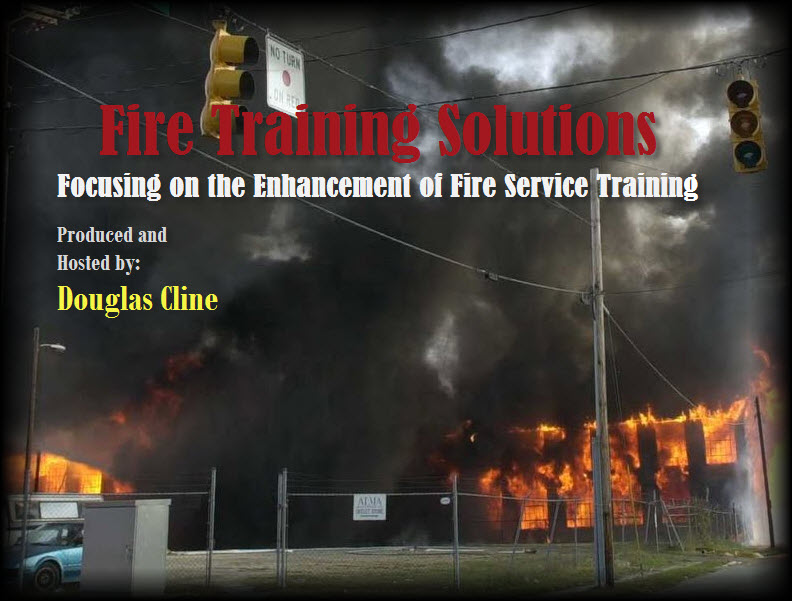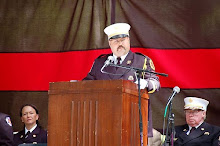
Power is the ability to command or apply force.
Authority is the right to command and expend resources.
A leader is one who can generate effective individual and group action to accomplish agency goals.
The fire service is a dynamic profession that is richly steeped in tradition, noble in deeds and calling. We know the fire service to be constant – yet ever changing in today’s society. We have built this profession upon man and machinery in opposition with an uncontrolled force known as fire. The last fifteen years has shown a shift from traditional fire service missions to encompass a wide scope of service deliveries that is ever expanding. We are challenged daily on the way we do business.
These changes have affected not only the fire service as a whole but also each level
within. The importance of competencies for fire officers in skills, knowledge and training is of the essence in today’s fire service. Fire officer cultural and attitudinal changes are the crucial links that will ultimately determine the future of our business.
Each year the American fire service experiences an average of over 100 line of duty deaths each year. Further we know that the amount of working fires are down approximately 66% of what they were in the mid 1970’s. So what is the score card saying? Why do we continue to know the causes of line of duty deaths and do nothing to change? Summed up it is nothing more than attitudes. We need to change our attitudes. There is no where in the corporate world that you could come in and give an annual report that stated we had a good year, we only lost 100 employees that you would not be escorted out the door before you could get your personal items in a box. Ron Siarnicki of the national Fallen Fire Fighters Foundation (NFFF) made this statement in one of there program. Guess what…HE IS CORRECT! Why do we as leaders in this business continue to allow these issues to occur? Why do we continue to deem it an honor to die in the line of duty? Why are we so resistant to change? We call it tradition! Well as a fire chief and a fire service member I have to say, “GET OVER OLD and BAD TRADITIONS, START A SAFE NEW ONE!” Ok, if I stepped on some toes here, GOOD, they probably needed it. We cannot afford to continue allowing the same mistakes over and over again to occur. At some point we have to start saying it is not acceptable to have injuries and Line of Duty Deaths (LODD). We must change this culture and the time is now and it starts with YOU!
I recently was shuttled to the airport following the New York Chief’s Conference in Lake George, New York. I was able to spend that time talking with a Bulgarian student who was asking many questions about the culture of the fire service. I asked me how many people get hurt or are killed doing this job as he had seen T-Shirts this week about this. I was ashamed to say we kill usually more than 100 firefighters a year. He then asked why. Boy did this hit home! We know why and how firefighters die in the line of duty but what are we doing to prevent them? In 2005 we had eighty seven (87) line of duty deaths. My question is just how many of these could have been prevented? One area that we know we can control the environment and have good chances of not having a line of duty death is training. But in 2005 we had 10 line of duty deaths in training. This equates to 10% of the total line of duty deaths for that year. Secondly responding to and returning from alarms accounted for 26 line of duty deaths or 59%. Deaths in crashes continue to account for a significant portion of the annual fatalities. How many of these could have been prevented? How many were not wearing their seat belts? How many was speed a contributing factor? To answer the last two questions is far too many. This can be corrected with an attitude adjustment.
Let’s look at how we can reduce these numbers. We need to first address our culture and make attitude changes. These changes need to be at all levels. We can begin this change today without problems by changing the thought process as new firefighters enter the academies across the United States. We can further push with the existing firefighters. We have to hit the dinosaurs hard because they take the new recruits freshly in the field and create dinosaur eggs that then develop into dinosaurs themselves. Thus the culture revolves in a vicious cycle. Ok there is the start but what do we do to impact the fire service?
We need to develop and require Comprehensive Health and Wellness Programs. These programs need to include physical conditioning, medical evaluations, and mental conditioning. With more and more firefighters perishing due to heart attacks and strokes (44 in 2005) we need to make sure that we are in the physical condition to do this job. I further think that the statistics are some what skewed. When we see LODDs of fire service personnel 65 years old or older who die after responses who did not engage in suppression activities it is being question as to where or not these individuals would have had a heart attack even if they were not on scene within that 24 hours. How many departments are providing and requiring comprehensive medical evaluations (NFPA 1582) for all of their members? If you are not, you need to look for a way to make this happen. So many times I hear of how certain medical evaluations have found members of the fire service with health issues they never knew existed. These physicals need to be annually. I recently was running a portion of our physical conditioning program which was a job performance physical agility test. I found one of our more experience personnel to be hypertensive (elevated blood pressure). I refused to let him test and sent him for medical evaluation. Guess what…he is alive today and has begun taking on life style changes and has medication to assist in controlling this issue. He had no symptoms of this condition and was at the potential levels for major problems. Simply as your grandmother would say, “an ounce of prevention is worth a pound of cure.”
Further we need to evaluate and support physical conditioning (NFPA 1583). These need to set personal goals as each individual is different, department goals and standards as to show everyone who performs must be able to perform at a set level. Lastly, we must have qualitative and quantitative testing of physical conditioning. Not as punishment but as a teaching tool. How many of your members can tell you exactly how long an SCBA will last when they are working at full capacity. As command officers this is important information as we work on scenes and strive to complete accountability of our personnel. More importantly it will keep our personnel safer.
We know this is one of the most stressful jobs anywhere you could travel. So just how well do we condition our folks mentally. Have you ever heard “suck it up it’s your job?” Sitting and talking with some professionals from an FDNY Engine Company they talked about and exhibited significant signs of Critical Incident Stress. This, I am sure, is compounded several times over from the events that affect the lives of these firefighters, but hey lets face facts here. These brothers are hurting and hurting bad. But have we addressed any of this, how about there families? I bet they are hurting too! So what do we do to help this problem? We must provide good Critical Incident Stress (CIS) education and coping techniques not only to the firefighters but also for their families. I know that I have done multiple programs on the east coast about this same issue, addressing firefighters and families together both the firehouse family and our true families all at the table together. This program is titled “Hearts and Sirens” and it explores CIS as it affects both the emergency services working and the family we leave at home when duty calls. My wife tells here heart felt stories of the situations she has had to live through and what helped. Basically we provide education, coping techniques and skills to deal with CIS for families. Let’s face it tough guys, even the hard core folks, struggle with all we face in this job at some point. As they face repetitive issues it becomes cumulative and eventually the levels will build up to the eruption point. This can be prevented and enhance our quality of life with just a little education and swallowing of pride on our part. Face it we are not super human, as much as we wish we were.
Training is the paramount. We must continue to enhance our training in every aspect. This includes going back to the basics. We often see in NIOSH reports where basic and routine components of our job are not performed or are contributing factors to LODD and injuries. So why can’t we do the basics? We have the mentality of hey I been there done that, I don’t need to do that anymore, I have got that down. Ok are you sure? If so show me! If you got it should not be hard or lengthy. Next we need to focus on realism. What are we truly going to face. I deal with the mentality of that wouldn’t happen to us or that's the big city stuff it’s not going to happen here. Well, last time I checked fire did not discriminate. It does matter who you are or where you are from. Reality check… who would have thought that an aircraft with terrorists on board would crash in rural Pennsylvania. That should prove this point with enough said. We must train hard, train realistically and train often. By doing this we stoke our tool boxes with the right tools for the job.
As we train we as leaders and trainers must make every effort to pull out the stops. We must not accept or condone any type of training environment or attitude that compromises the safety of any firefighter. We must cease pushing the envelope with cowboy tactics that only prove that you can show boat. If this is you I have a message…Your Dangerous and you need to change. We do not need to hurt or kill firefighters to have good quality training. In fact good quality training starts with no injuries and especially no deaths. In research of training line of duty deaths almost every incident could have been prevented.
In closing we must have to courage to say NO and the courage to be safe. It often is not a popular personality folks want to see, but again is it worth dieing for…Most times not! Come on folks, let’s face it, we are not doing everything correct here. We need to change and we need to change NOW!!! Do your self, your firefighters and their families a favor. Help prevent a line of duty death, change the attitudes and culture in your departments and have the courage to be safe! The families at home depend on you to be a leader and an officer. If you are not willing to do as much as possible to help with the change of the culture, do the fire service a favor, RETIRE or QUIT or RESIGN BEING AN OFFICER because you are part of the problem not part of the solution. Help us support the National Fallen Firefighters Foundation and the fire service quest of “EVERYONE GOES HOME”.

